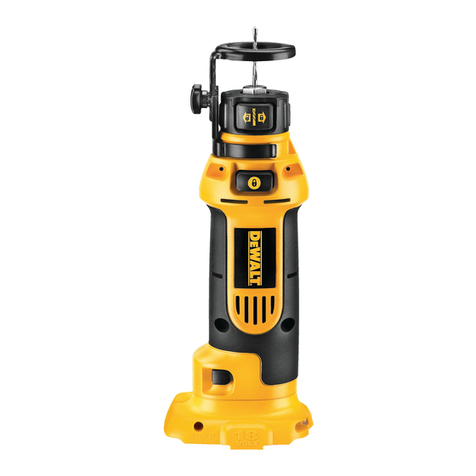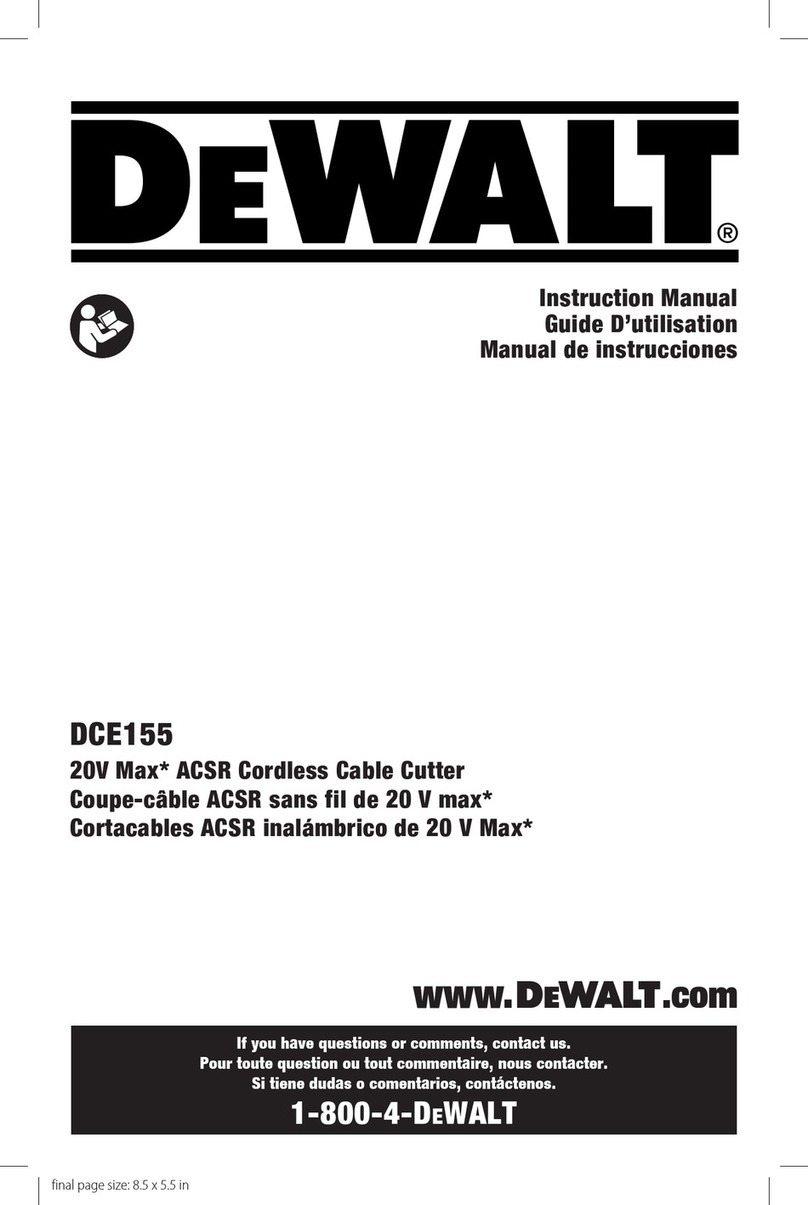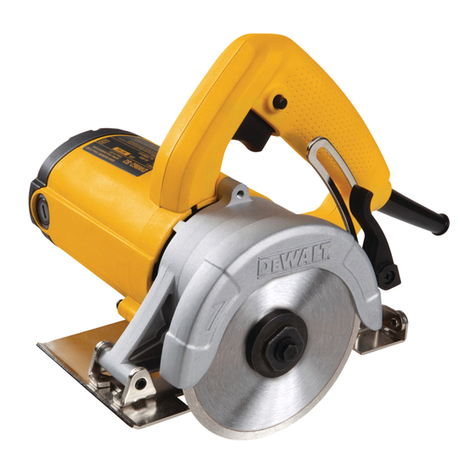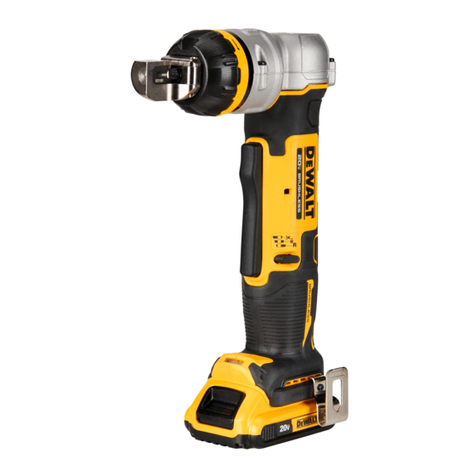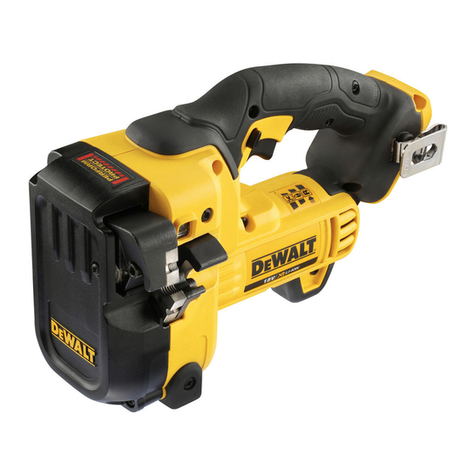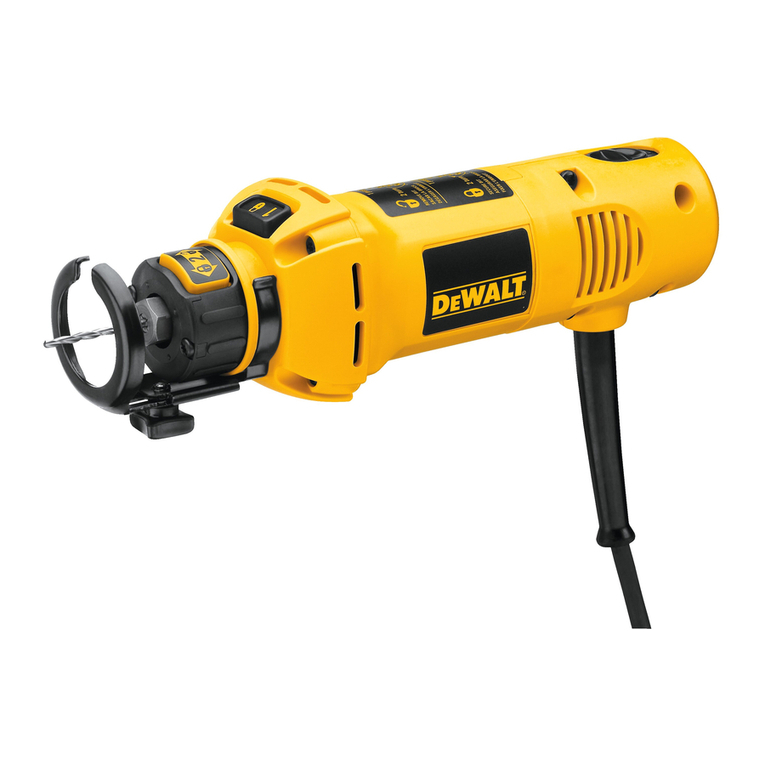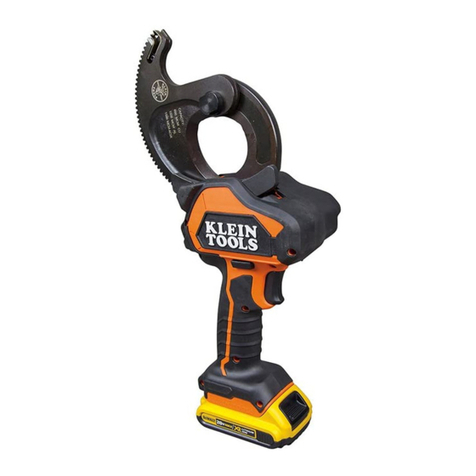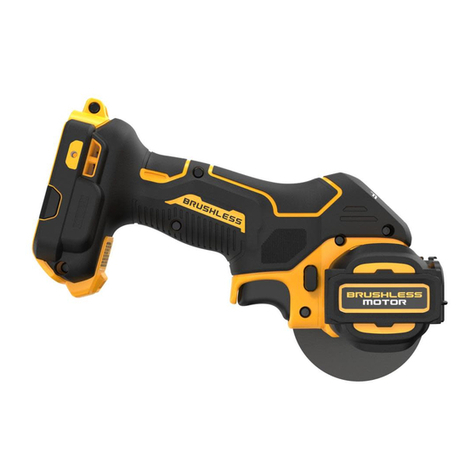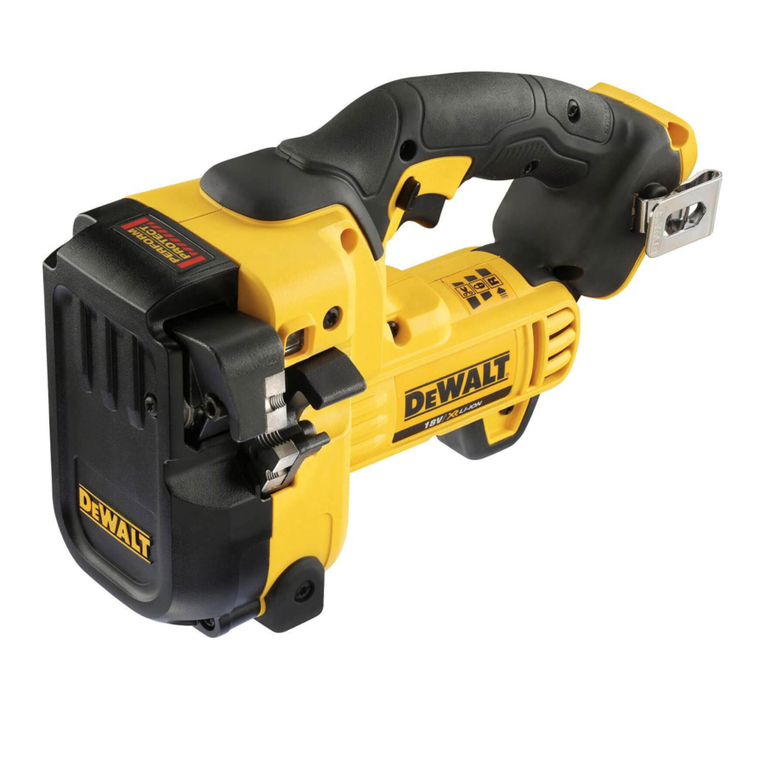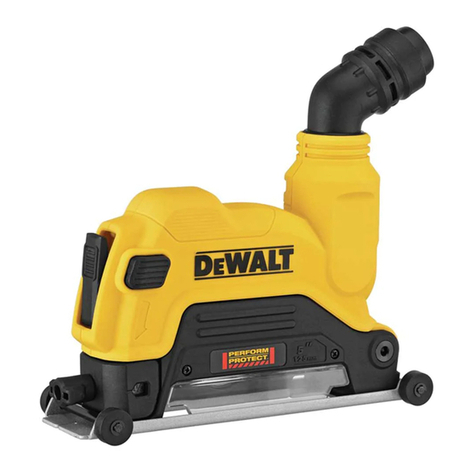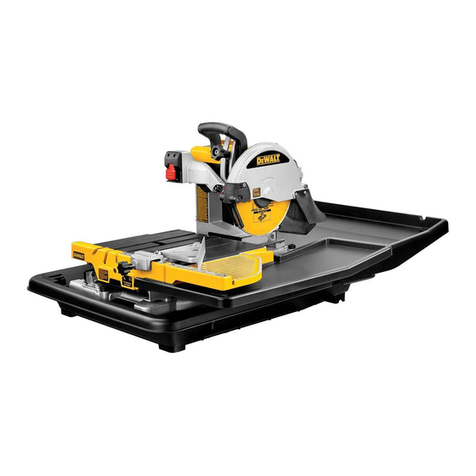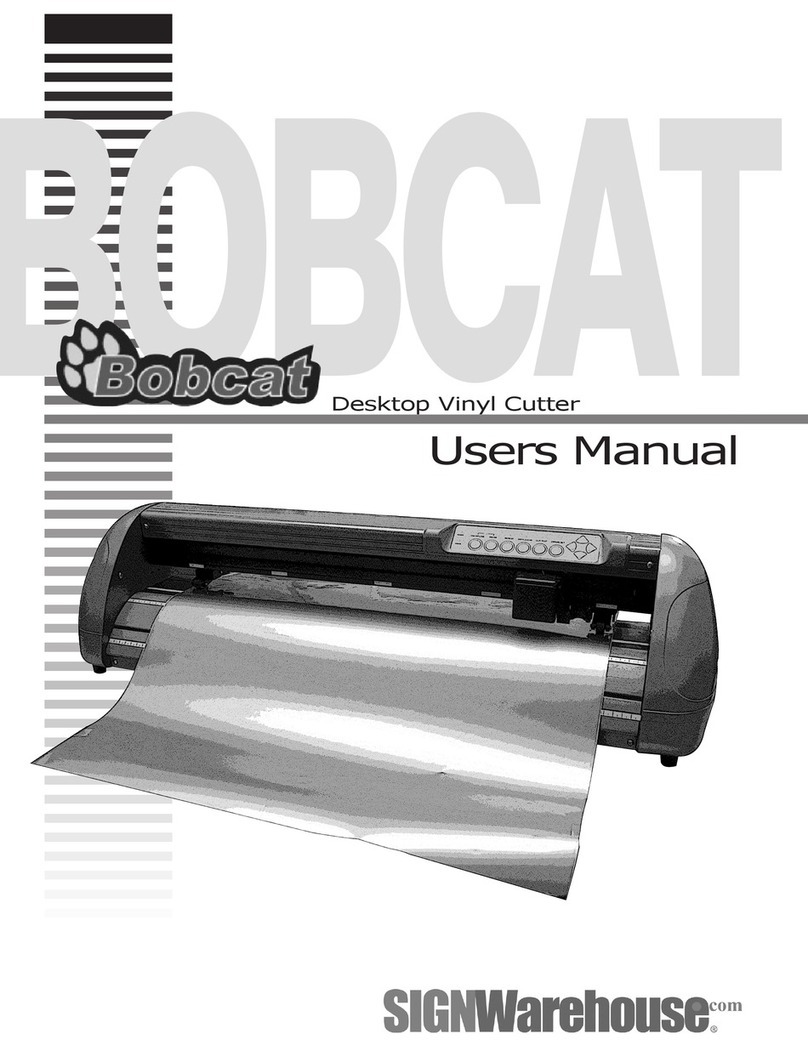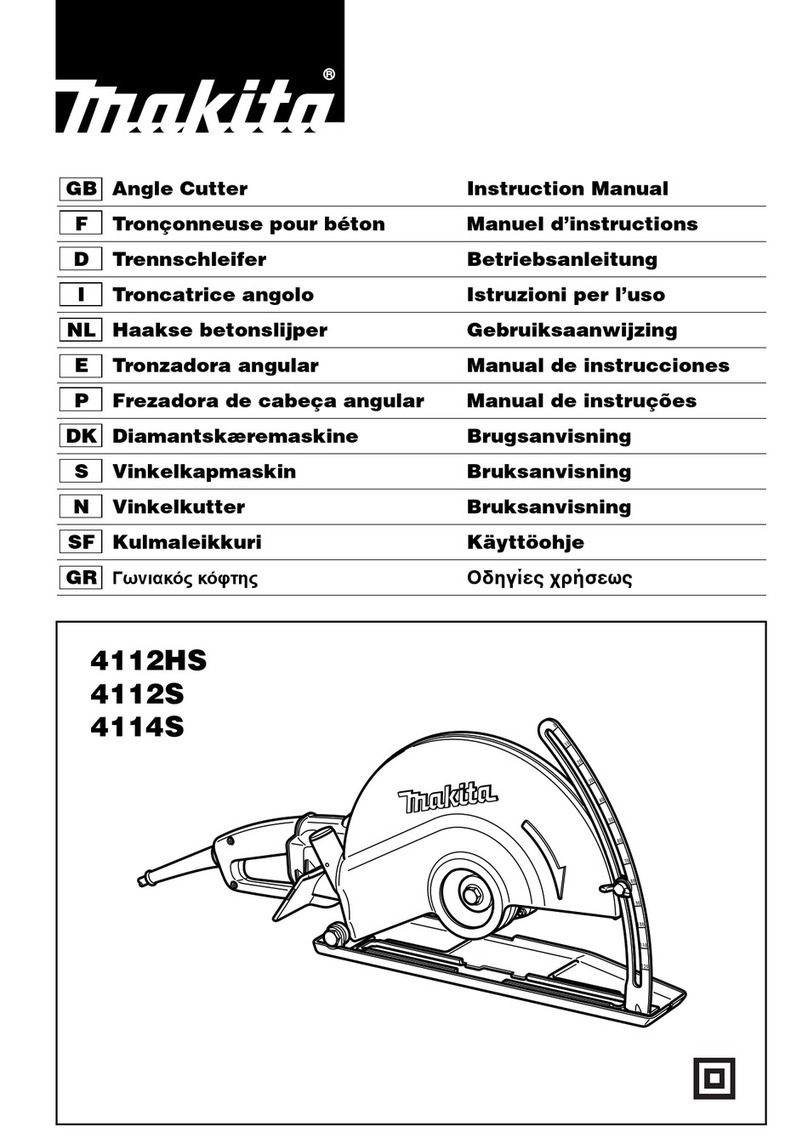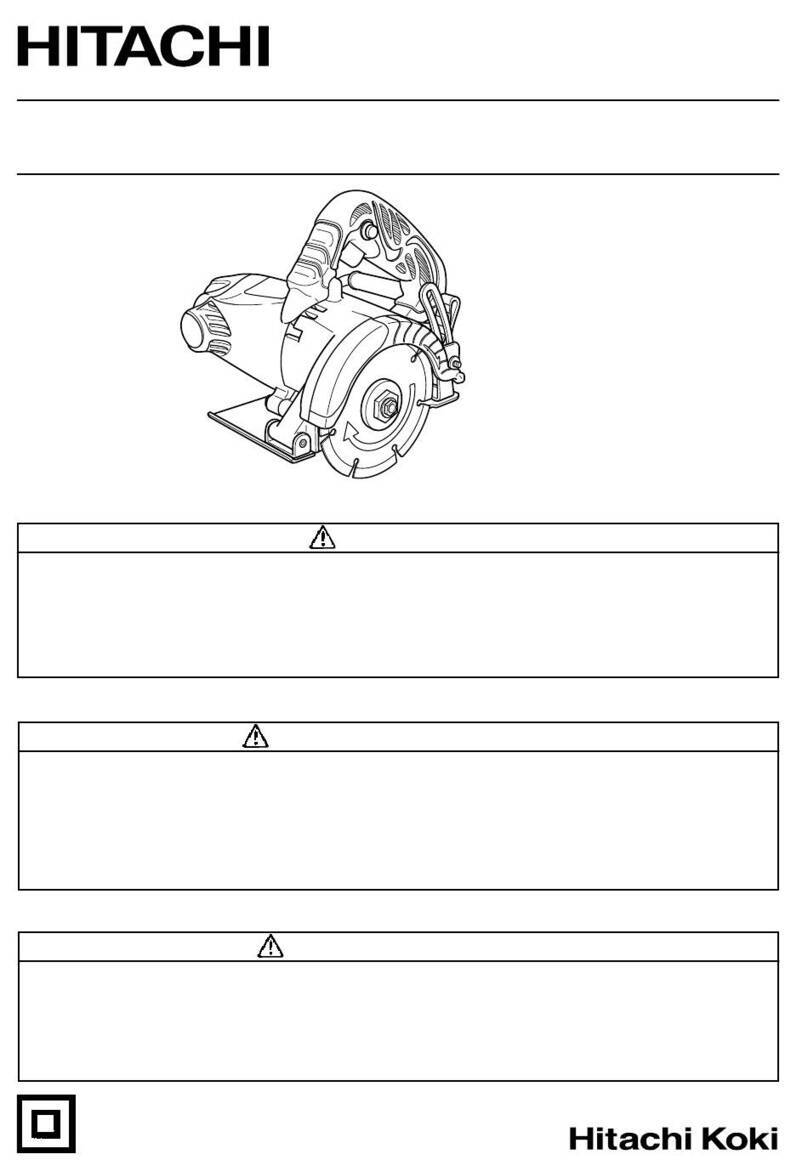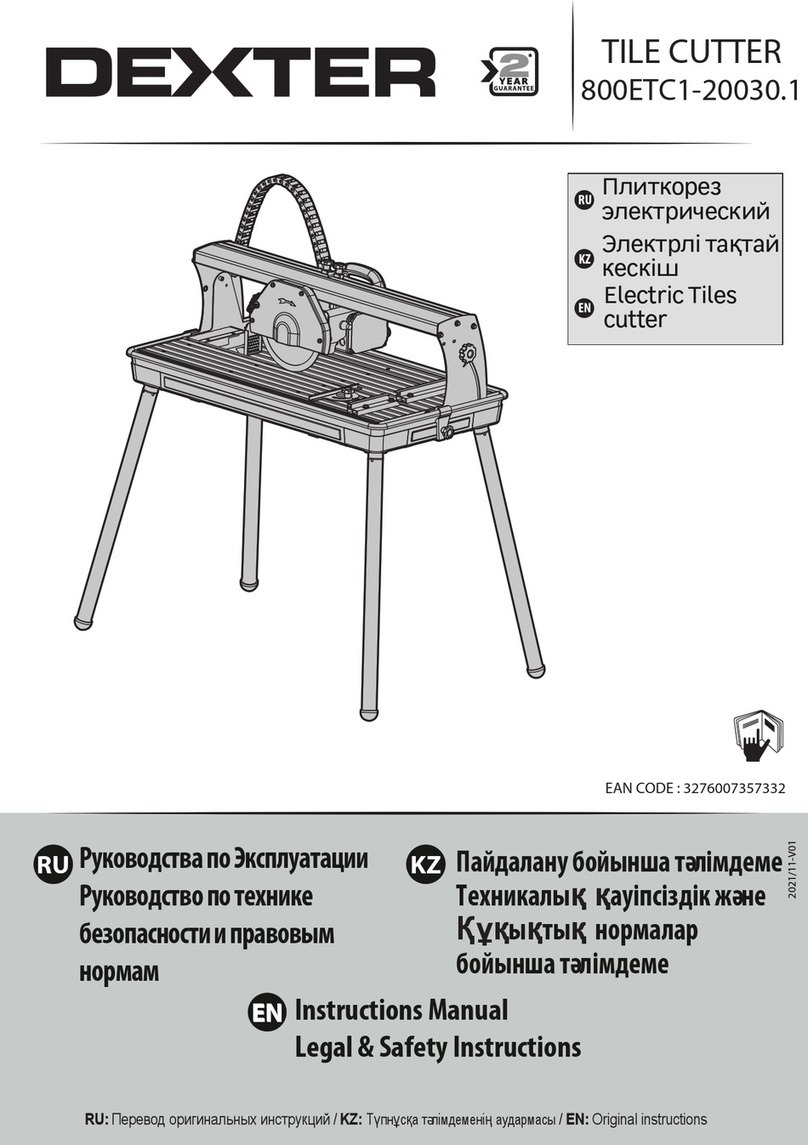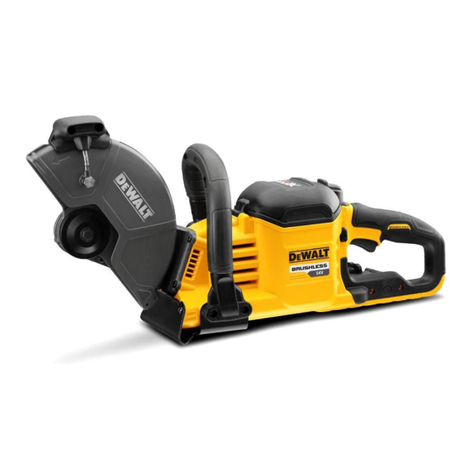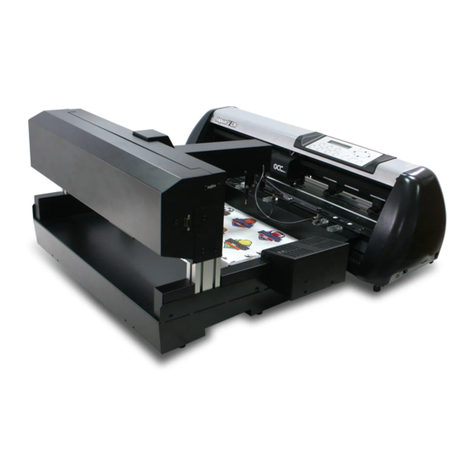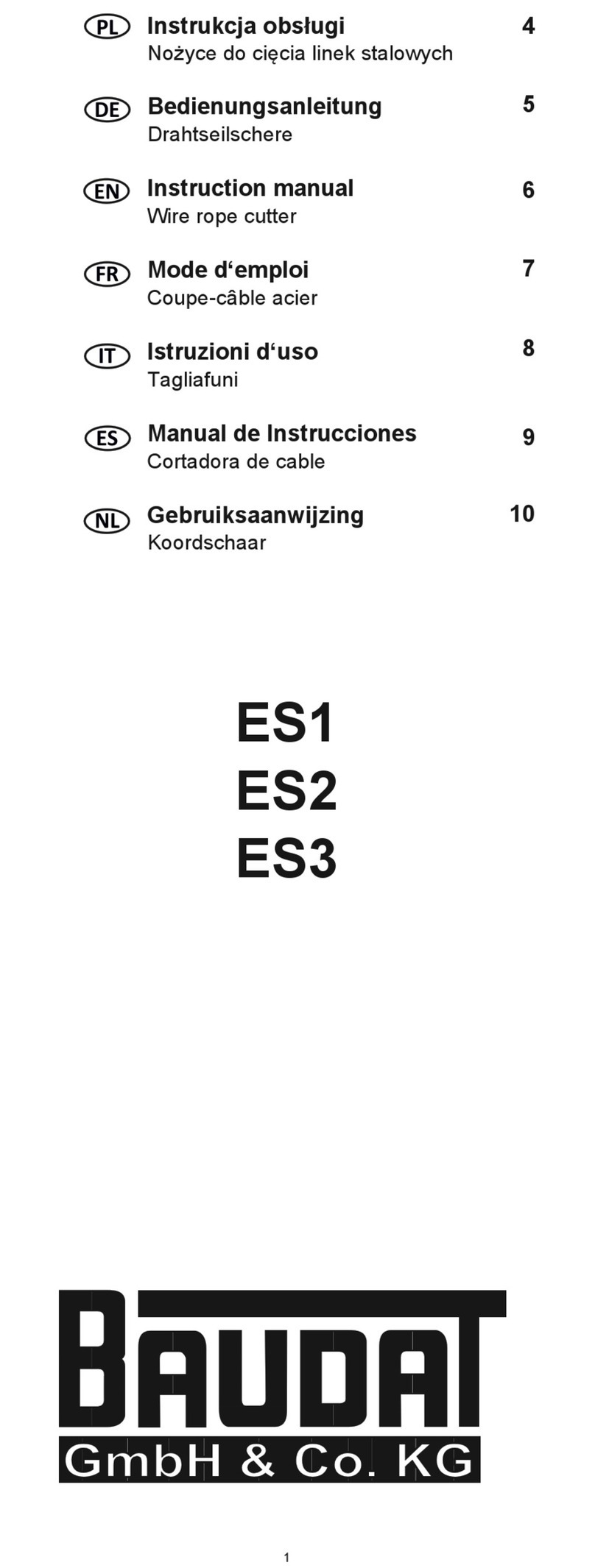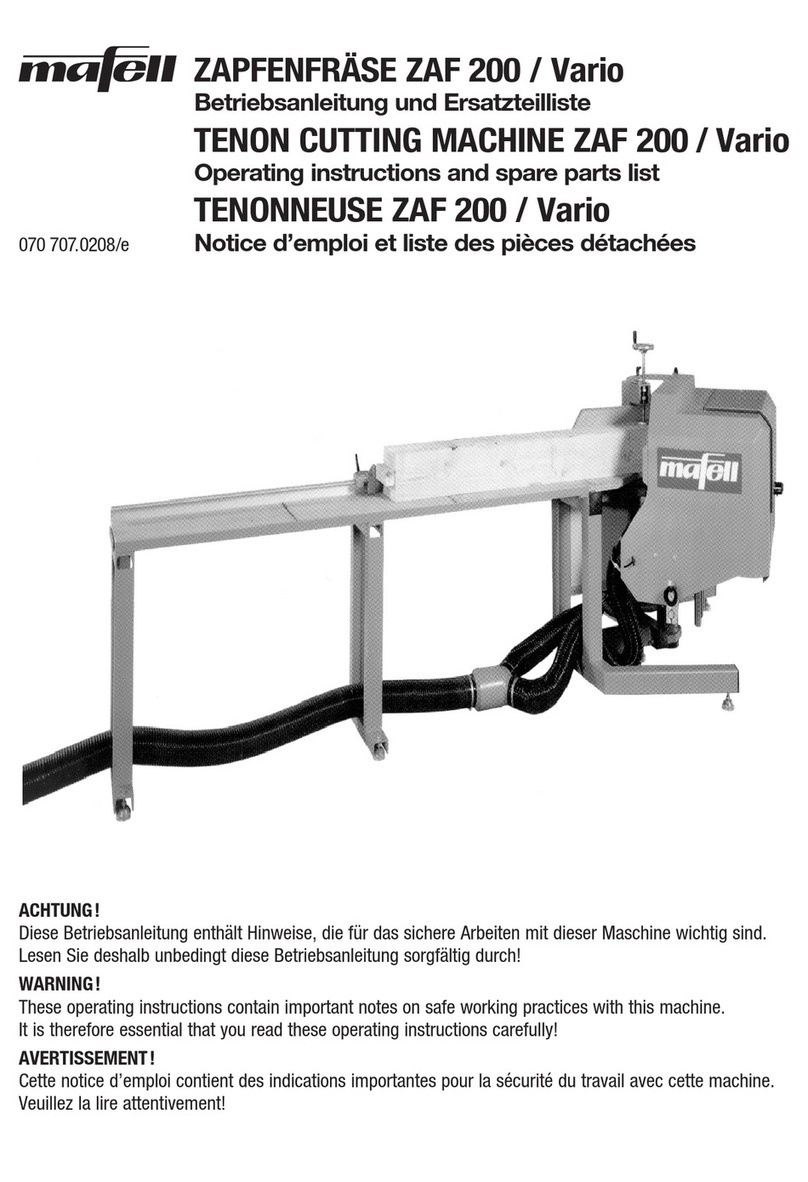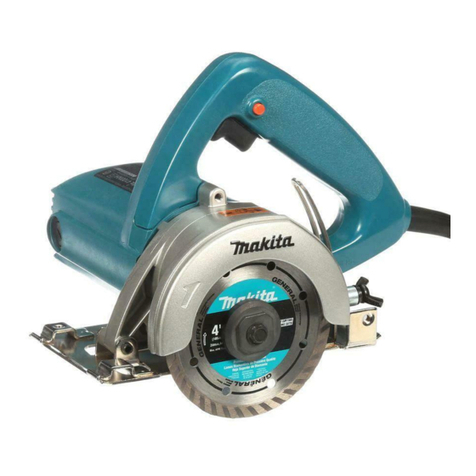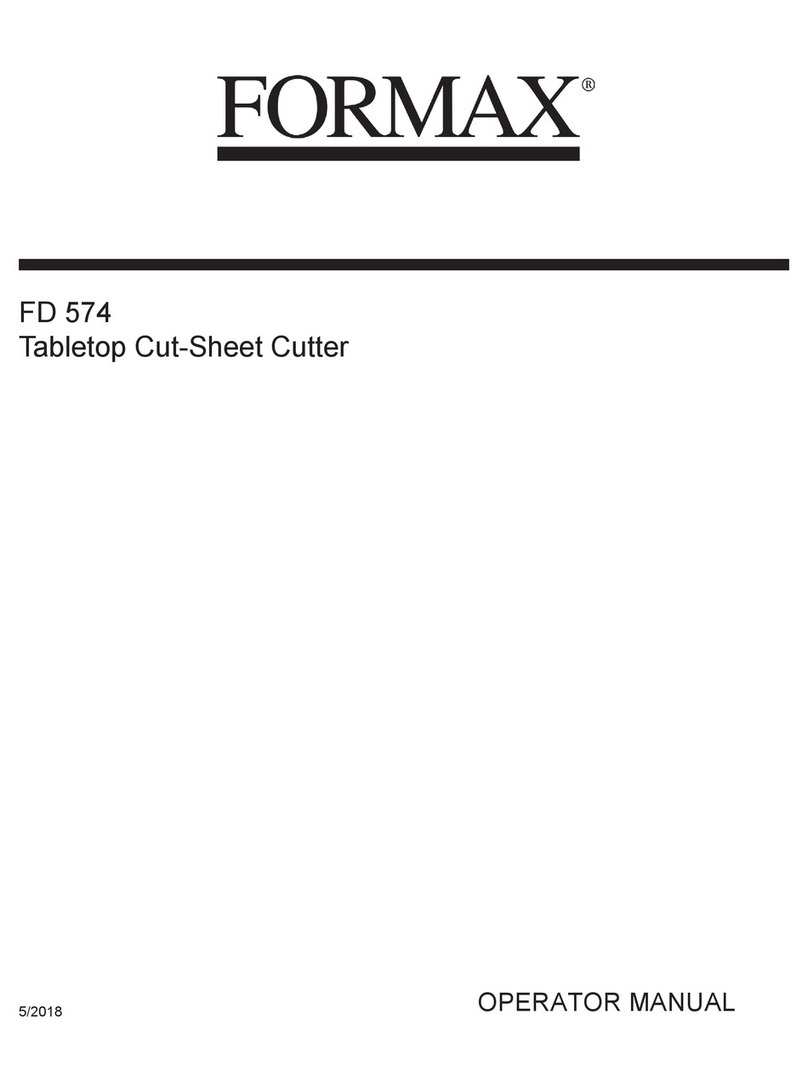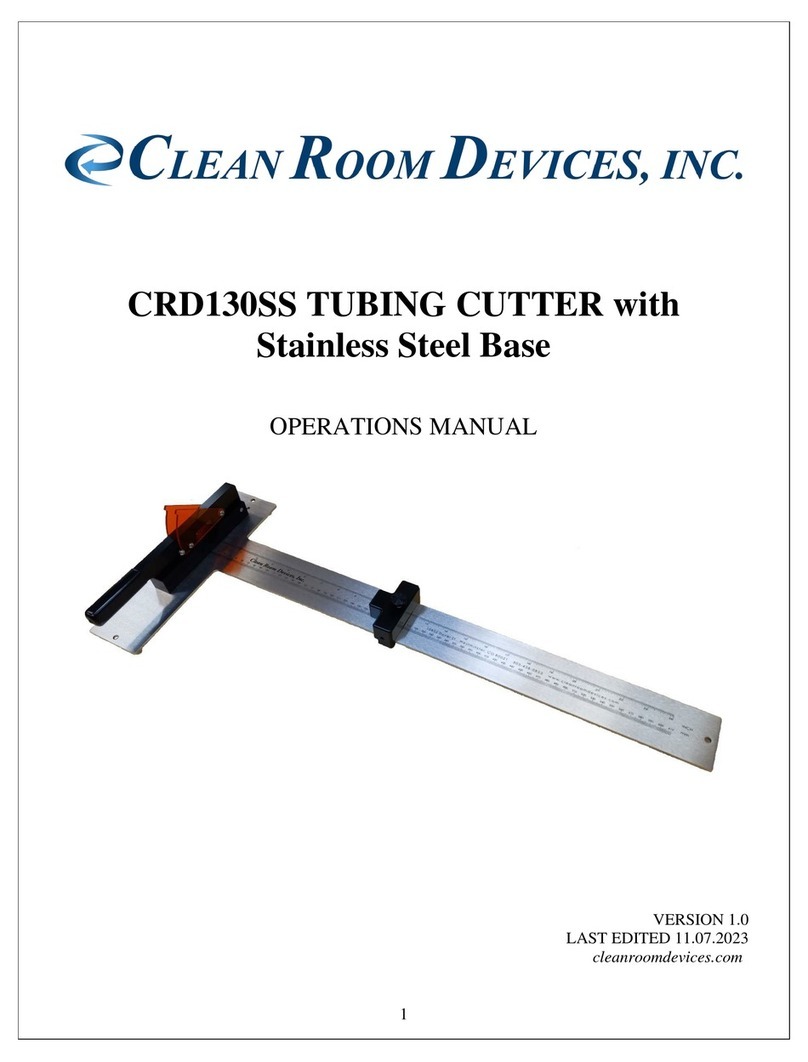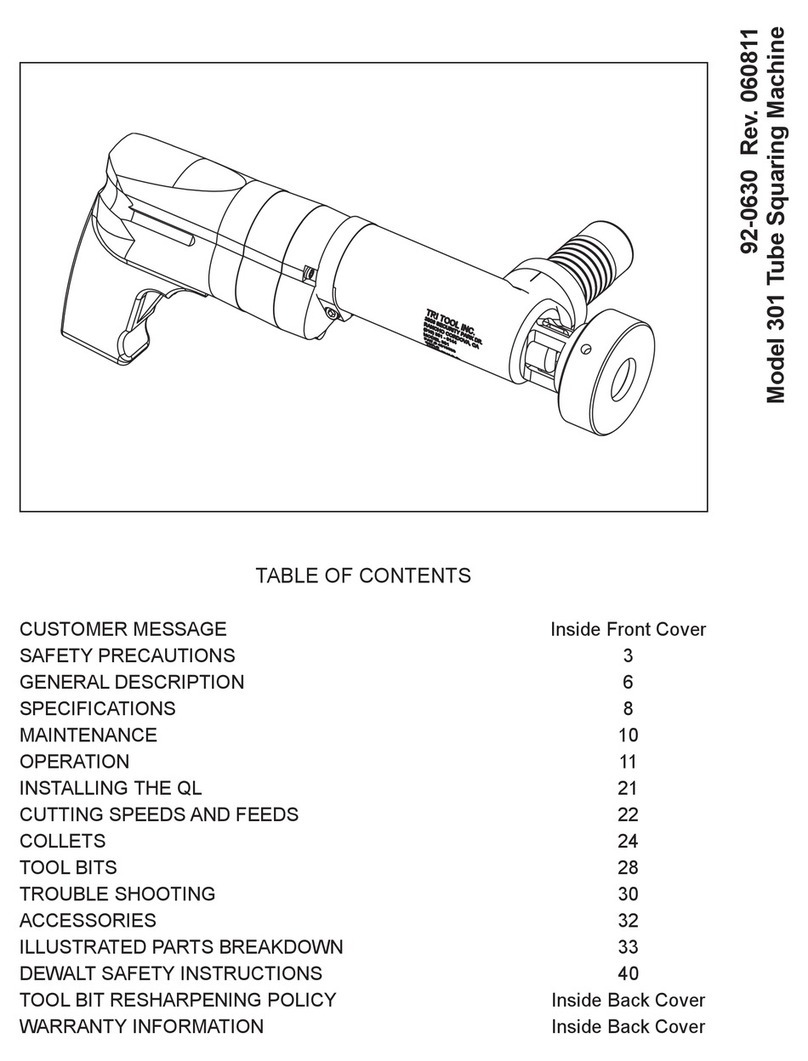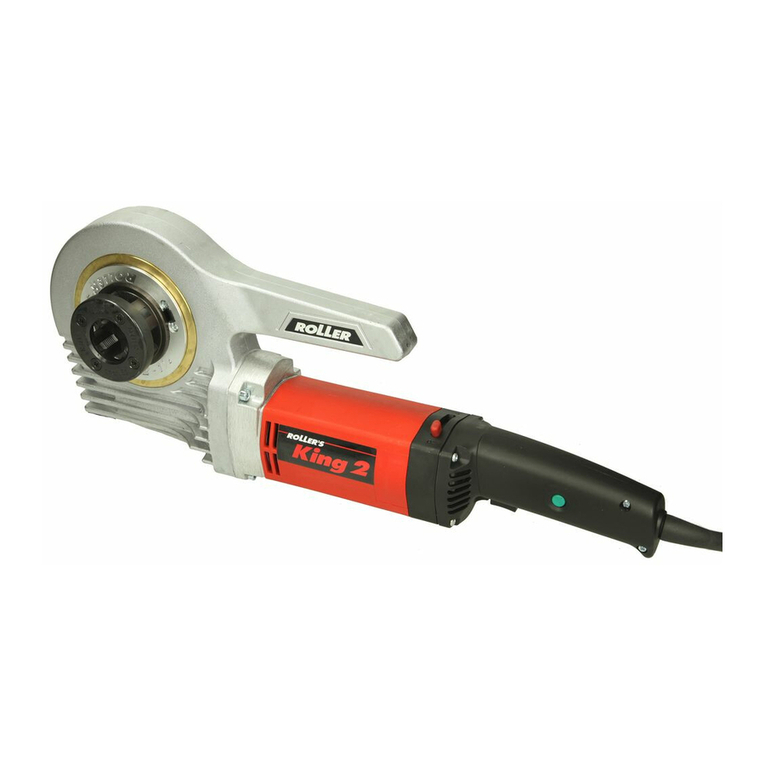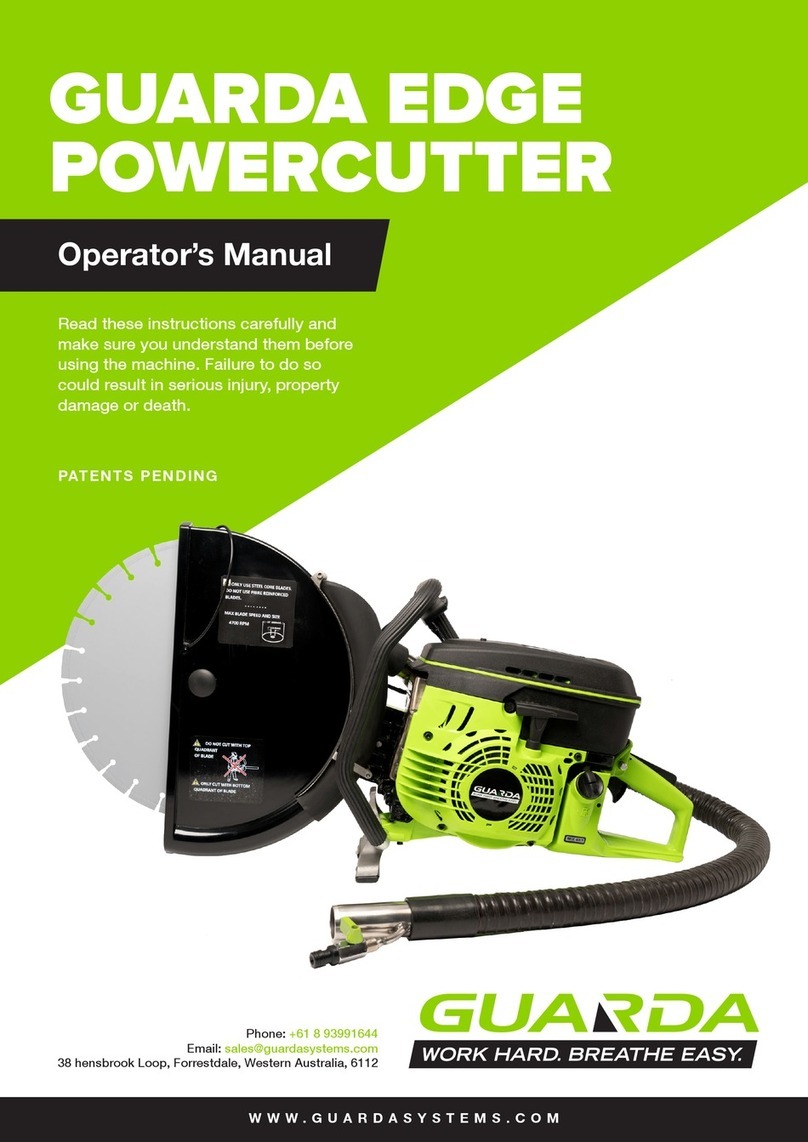
7
ENGLISH
use a power tool while you are tired or under the
influence of drugs, alcohol or medication. A moment
of inattention while operating power tools may result in
serious personalinjury.
b ) Use personal protective equipment. Always wear eye
protection. Protective equipment such as a dust mask,
non-skid safety shoes, hard hat or hearing protection used
for appropriate conditions will reduce personalinjuries.
c ) Prevent unintentional starting. Ensure the switch
is in the off-position before connecting to power
source and/or battery pack, picking up or carrying
the tool. Carrying power tools with your finger on the
switch or energising power tools that have the switch on
invitesaccidents.
d ) Remove any adjusting key or wrench before turning
the power tool on. A wrench or a key left attached
to a rotating part of the power tool may result in
personalinjury.
e ) Do not overreach. Keep proper footing and balance
at all times. This enables better control of the power tool
in unexpectedsituations.
f ) Dress properly. Do not wear loose clothing or
jewellery. Keep your hair and clothing away from
moving parts. Loose clothes, jewellery or long hair can be
caught in movingparts.
g ) If devices are provided for the connection of dust
extraction and collection facilities, ensure these are
connected and properly used. Use of dust collection
can reduce dust-relatedhazards.
h ) Do not let familiarity gained from frequent use of
tools allow you to become complacent and ignore
tool safety principles. A careless action can cause severe
injury within a fraction of asecond.
4) Power Tool Use and Care
a ) Do not force the power tool. Use the correct power
tool for your application. The correct power tool
will do the job better and safer at the rate for which it
wasdesigned.
b ) Do not use the power tool if the switch does not turn
it on and off. Any power tool that cannot be controlled
with the switch is dangerous and must berepaired.
c ) Disconnect the plug from the power source and/
or remove the battery pack, if detachable, from
the power tool before making any adjustments,
changing accessories, or storing power tools. Such
preventive safety measures reduce the risk of starting the
power toolaccidentally.
d ) Store idle power tools out of the reach of children
and do not allow persons unfamiliar with the power
tool or these instructions to operate the power tool.
Power tools are dangerous in the hands of untrainedusers.
e ) Maintain power tools and accessories. Check for
misalignment or binding of moving parts, breakage
of parts and any other condition that may affect the
power tool’s operation. If damaged, have the power
tool repaired before use. Many accidents are caused by
poorly maintained powertools.
f ) Keep cutting tools sharp and clean. Properly
maintained cutting tools with sharp cutting edges are less
likely to bind and are easier tocontrol.
g ) Use the power tool, accessories and tool bits, etc.
in accordance with these instructions, taking into
account the working conditions and the work to be
performed. Use of the power tool for operations different
from those intended could result in a hazardoussituation.
h ) Keep handles and grasping surfaces dry, clean and
free from oil and grease. Slippery handles and grasping
surfaces do not allow for safe handling and control of the
tool in unexpectedsituations.
5) Service
a ) Have your power tool serviced by a qualified repair
person using only identical replacement parts. This
will ensure that the safety of the power tool ismaintained.
Additional Safety for Multicutter
• Do not use saw blades which are damaged or deformed;
• Use only saw blades recommended by the manufacturer
which conform to EN 847-1;
• Do not use saw blades manufactured from high speed steel;
• Wear suitable personal protective equipment when necessary,
this could include:
ʵ hearing protection to reduce the risk of induced hearing
loss;
ʵ eye protection;
ʵ respiratory protection to reduce the risk of inhalation of
harmful dust;
ʵ gloves for handling saw blades (saw blades shall be
carried in a holder wherever practicable) and rough
material;
Maintenance and Servicing
• Operator’s instructions on factors influencing exposure to
noise (e.g. use of saw blades designed to reduce the emitted
noise, saw blade and machine maintenance);
• Report faults in the machine, including guards or saw blades,
as soon as they arediscovered.
Safe Operation
• Select the correct saw blade for the material to be cut;
• Do not use the saw to cut other materials than those
recommended by the manufacturer;
• Lifting and transportation information. To lift and support the
metal saw see FigureF.
• Do not use the saw without the guards in position, in good
working order and properly maintained;
• Keep the floor area around the machine level, well maintained
and free of loose materials e.g. chips and cut-offs;
• Provide adequate general or localised lighting;
• The operator is adequately trained in the use adjustment and
operation of the machine;


